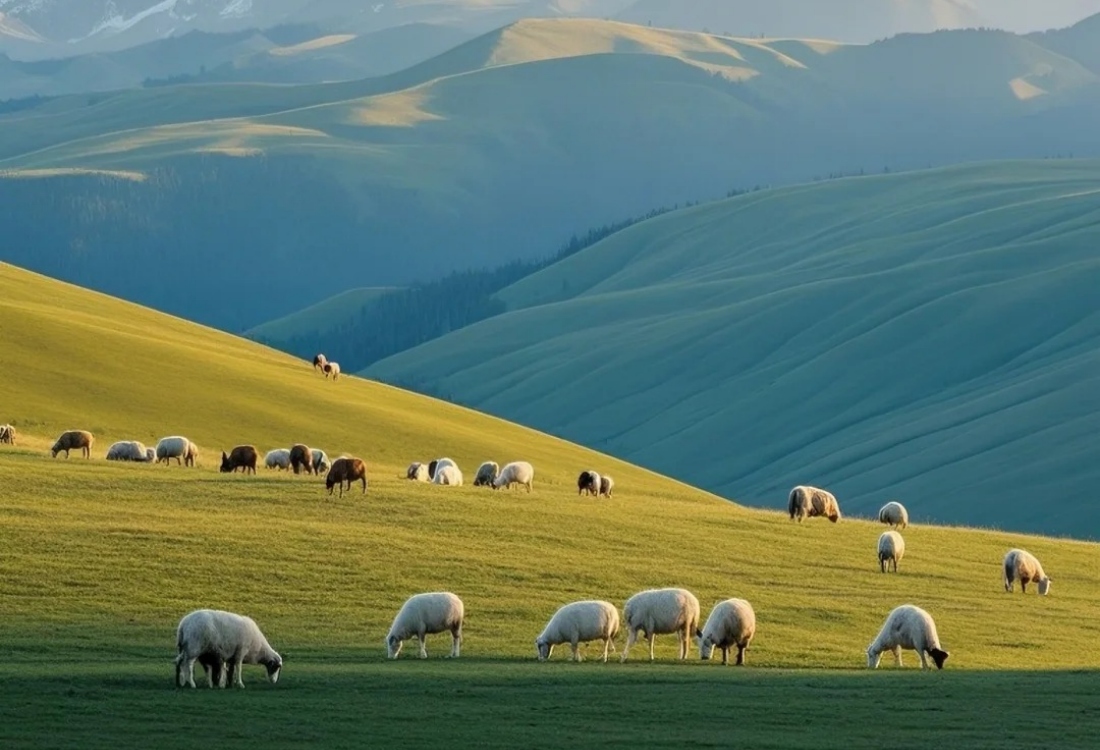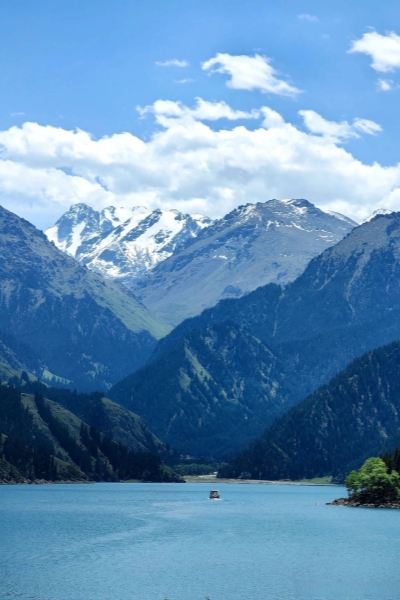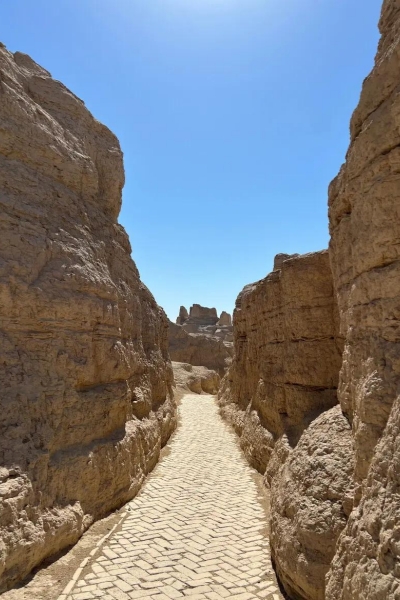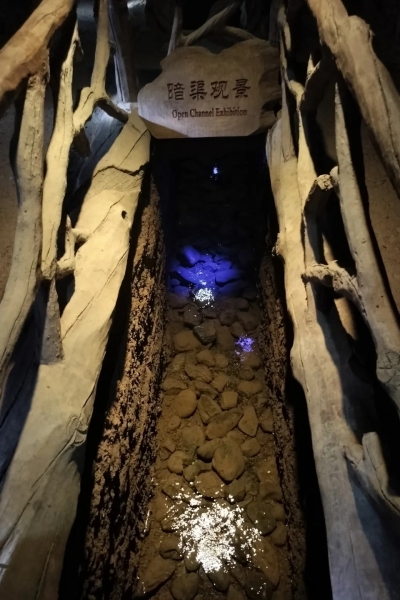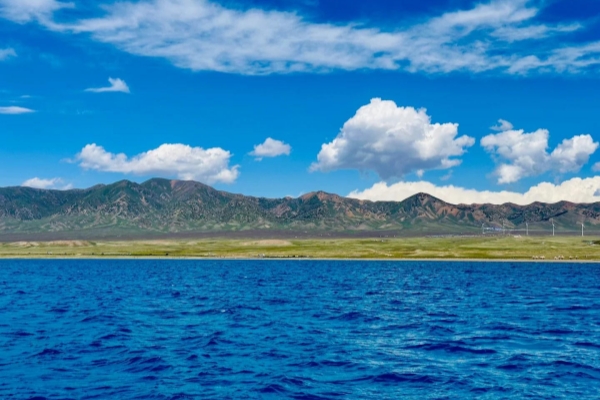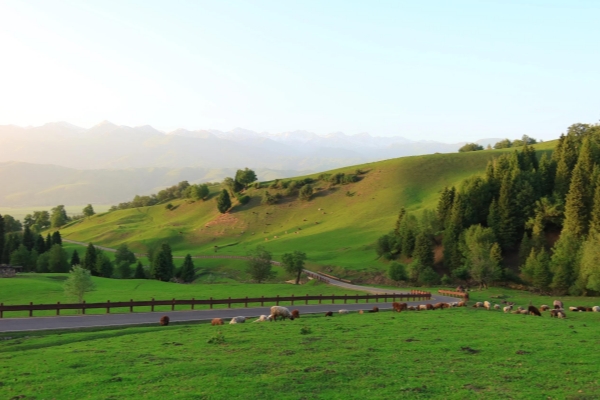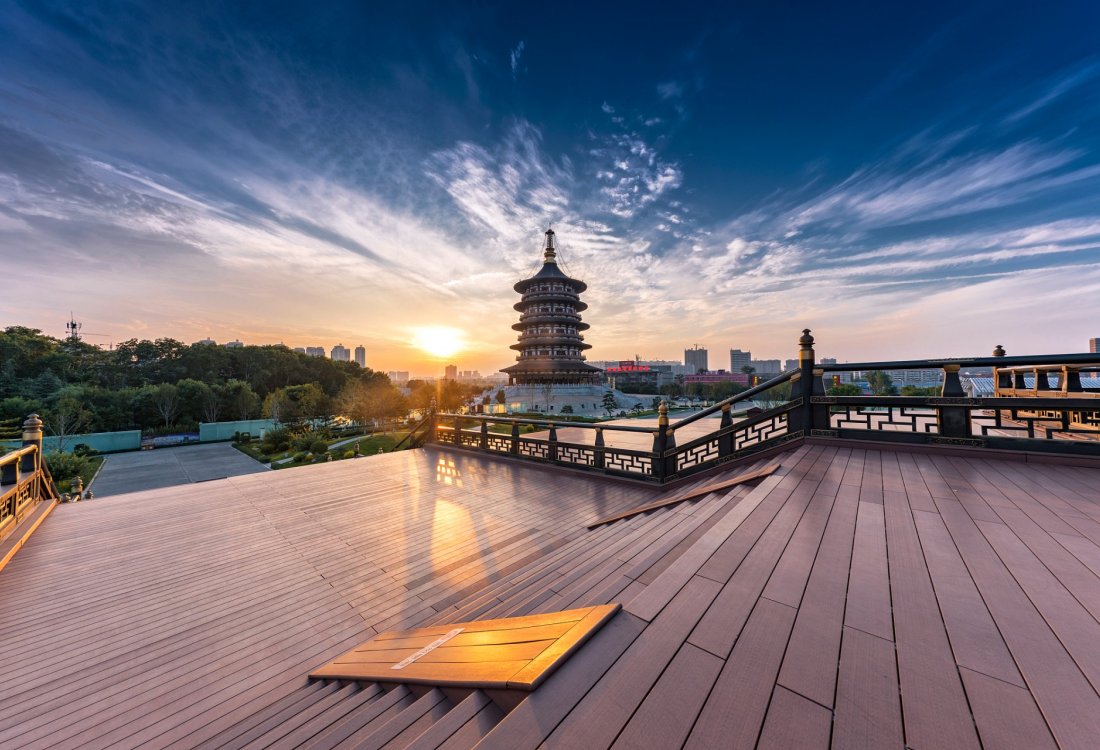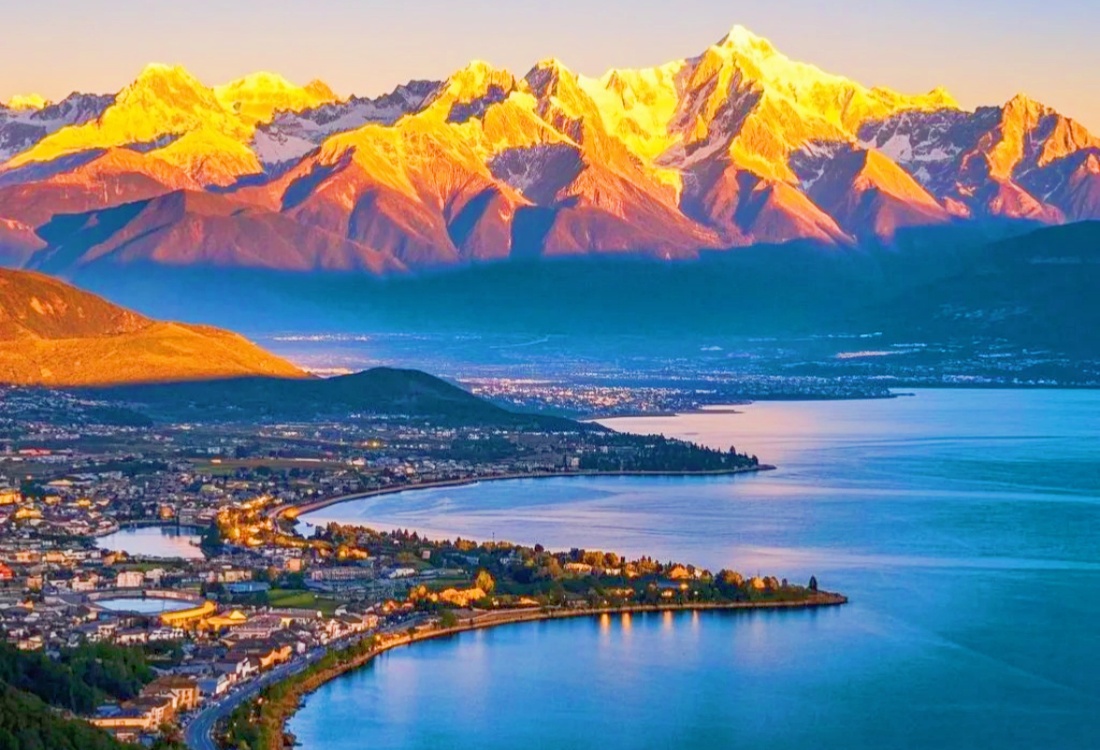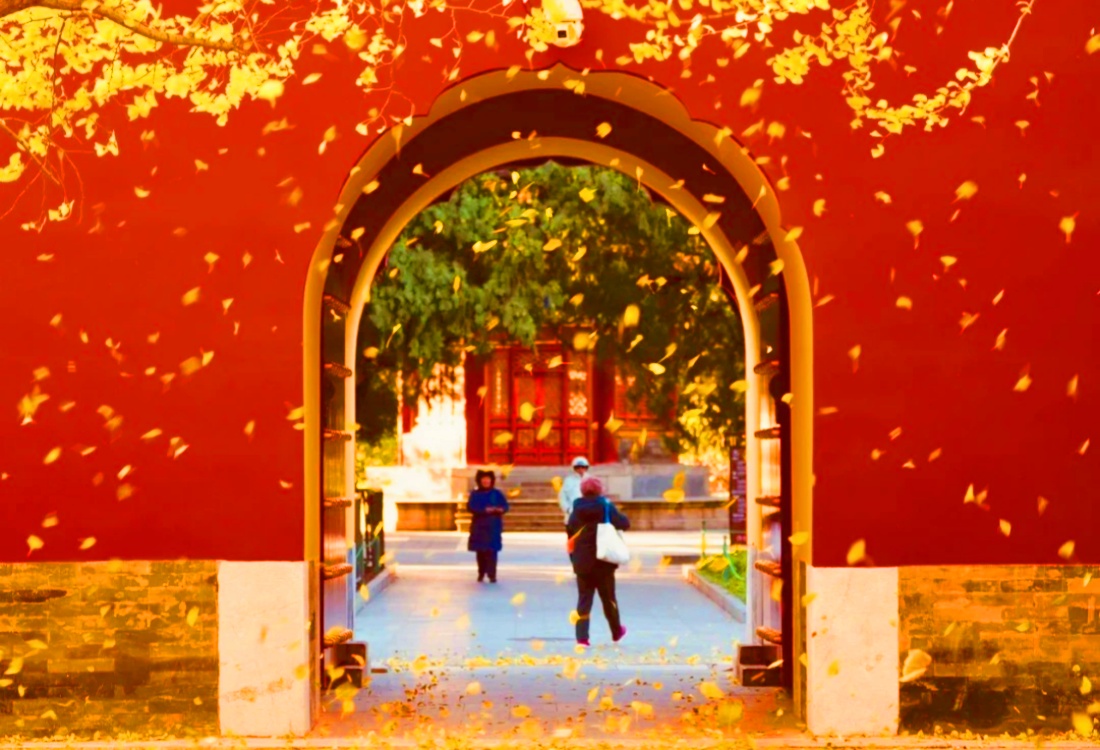Table of Contents
ToggleAre you planning an adventure to the vast and captivating region of Xinjiang, China’s largest province? This expansive territory, rich in history and natural beauty, offers everything from towering snow-capped mountains and serene lakes to sprawling deserts and vibrant cultural tapestries.
However, Xinjiang’s diverse geography and continental climate mean that timing your visit is crucial for the best experience. This article is designed to be your comprehensive guide, helping you navigate the seasons and pinpoint the ideal time to visit Xinjiang, tailored to your interests and travel style. Xinjiang offers unique experiences throughout the year, but each season brings its own distinct character, advantages, and considerations. The period from May to October is generally considered the most favorable for overall travel comfort and scenic beauty.
Spring in Xinjiang(March to May): Blooming Beauty
As snows melt and temperatures rise, the landscapes in Xinjiang gradually burst into life with fresh greenery and vibrant blooms. This period is ideal for those wishing to avoid peak season crowds and witness nature’s resurgence.
Temperature in Xinjiang in Spring
Spring in Xinjiang is relatively short, with temperatures gradually warming. Average temperatures range from 10°C to 22°C (50°F to 72°F). Early spring (March and early April) can still be quite cool, especially in the northern Xinjiang. Winds can be a factor, sometimes leading to dusty conditions, so packing layers, including a windbreaker, is advisable. Southern Xinjiang tends to warm up faster than the north.
Where to Visit in Xinjiang in Spring
- Turpan: Famous for its early spring, witness the stunning apricot blossoms that paint the valleys in delicate hues. It’s also a great time to explore ancient sites like the Jiaohe Ruins and the Karez irrigation system in milder temperatures.
- Ili Kazakh Autonomous Prefecture: By late spring, the grasslands, particularly around the Ili River Valley, begin to turn a vibrant green, dotted with wildflowers. The Apricot Valley in Xinyuan County is a must-see if your timing aligns with the bloom (usually April).
- Tianshan Tianchi Lake (Heavenly Lake): As the ice melts, the lake, nestled in the Tianshan Mountains near Urumqi, reveals its stunning turquoise waters surrounded by budding forests.
- Kanas Lake: While more famous for autumn, a spring visit offers serene beauty with far fewer tourists. You can witness the landscape awakening from winter.
Summer in Xinjiang(June to August): Lush Landscapes and Outdoor Adventures
Summer is the peak tourist season in Xinjiang, and for good reason. The region is at its most vibrant, with lush grasslands, clear blue skies, and long sunny days perfect for exploring its vast natural beauty, especially in Northern Xinjiang.
Temperature in Xinjiang in Summer
Summers are generally warm. In Northern Xinjiang, temperatures typically range from 20°C to 30°C (68°F to 86°F), making it pleasant for outdoor activities. Southern Xinjiang, particularly the Turpan Depression (known as the “hottest place in China”), can experience scorching temperatures, often exceeding 35°C (95°F) and sometimes reaching well into the 40s°C (over 104°F). While rainfall is generally low, summer is considered the wetter season, especially in the mountainous north.
Places to Visit in Xinjiang in Summer
- Kanas Lake: This iconic alpine lake in Northern Xinjiang is at its most stunning, with deep blue waters, surrounding pine forests, and opportunities for hiking, boating, and photography.
- Sayram Lake: Known as the “Last Tear of the Atlantic,” this is the largest alpine lake in Xinjiang. Its vast expanse of sapphire water, surrounded by flowering grasslands and snow-capped peaks, is breathtaking.
- Nalati Grassland: One of China’s most beautiful grasslands, Nalati is a sea of green in summer, dotted with yurts and grazing livestock. Perfect for horseback riding and experiencing Kazakh nomadic culture.
- Karajun Grassland: Offers expansive, undulating green meadows against a backdrop of coniferous forests and snowy mountains.
- Turpan: Despite the heat, summer is harvest time for Turpan’s famous grapes and melons. Visits are best scheduled for early morning or late afternoon.
- Kashgar: Explore the historic Old Town and experience the vibrant culture. The Sunday Livestock Market is a unique spectacle, though be prepared for the summer warmth.

10 Days Xinjiang Private Kanas & Hemu Tour: Sayram Lake, Nalati Grassland
Autumn in Xinjiang(September to October): Golden Season of Colors and Harvest
Widely regarded as the best time to visit Xinjiang, autumn offers a symphony of colors, pleasant temperatures, and the bounty of the harvest season. The landscapes transform into a painter’s palette of gold, red, and orange, making it a photographer’s dream.
Temperature in Xinjiang in Autumn
Autumn brings mild and comfortable weather across most of Xinjiang. Daytime temperatures typically range from 10°C to 25°C (50°F to 77°F). The skies are often clear and blue, and the intense heat of summer subsides, making it ideal for all kinds of travel and outdoor exploration. Nights can be cool, especially towards late October.
Must-see Attractions in Xinjiang in Autumn
- Kanas Lake and Hemu Village: This is arguably the most iconic autumn destination in Xinjiang. The forests surrounding Kanas Lake and the traditional wooden houses of Hemu are set ablaze with brilliant golden and red foliage.
- Keketuohai National Geopark: Known for its unique granite rock formations and birch forests that turn golden in autumn.
- Populus Euphratica (Diversifolious Poplar) Forests: Found in areas like Luntai County along the edge of the Taklamakan Desert, these ancient trees turn a spectacular golden yellow in October, creating a stunning contrast with the desert landscape.
- Kashgar: The pleasant autumn weather is perfect for exploring the ancient alleyways of Kashgar’s Old Town, visiting the Id Kah Mosque, and experiencing the vibrant Sunday Bazaar. It’s also harvest season for pomegranates and melons.
- Turpan: Cooler temperatures make visiting the historical sites much more comfortable. The grape harvest continues into early autumn.
- Tianshan Tianchi Lake (Heavenly Lake): The surrounding mountainsides are adorned with autumn colors, reflecting beautifully in the clear lake waters.
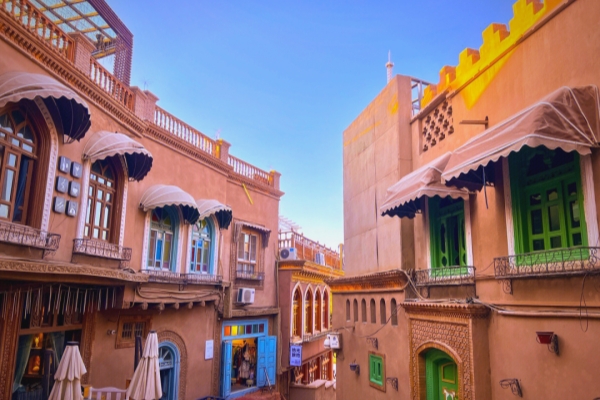
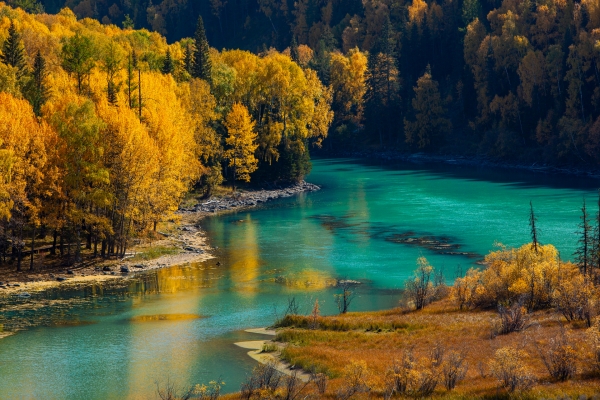
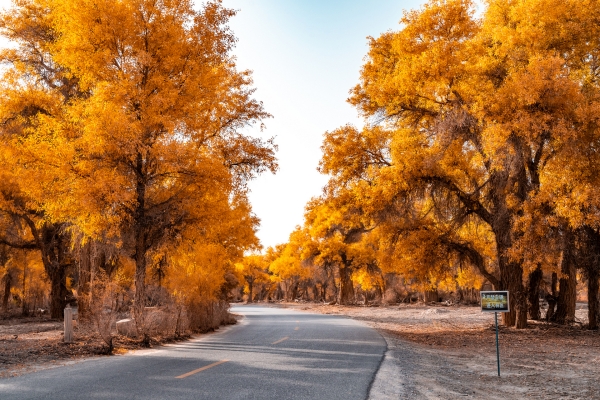


7 Days Northern Xinjiang Tour: Urumqi Keketuohai Burqin Hemu Kanas Urho
Winter in Xinjiang(November to February): Wonderland of Snow and Ice
Winter transforms Xinjiang into a serene, snow-covered wonderland. While it can be severely cold, especially in the north, it offers unique landscapes, opportunities for winter sports, and a chance to experience the region with fewer tourists.
Temperature in Xinjiang in Winter
Winters are cold across Xinjiang. Northern Xinjiang, particularly the Altay region, sees temperatures plummeting to -20°C (-4°F) or even lower, with heavy snowfall. Southern Xinjiang is comparatively milder, with temperatures typically ranging from -10°C to 5°C (14°F to 41°F). Days are often sunny despite the cold.
Where to Visit in Xinjiang in Winter
- Altay Mountains (including Kanas and Hemu): This region becomes a paradise for winter sports enthusiasts, offering skiing, snowboarding, and snowshoeing. Kanas Lake freezes over, and Hemu Village under a blanket of snow is incredibly picturesque, offering a fairy-tale experience.
- Tianshan Mountains Ski Resorts: Areas around Urumqi, like the Tianshan International Ski Resort, offer excellent skiing and snowboarding facilities.
- Ulungur Lake: Known for its winter fishing traditions and ice-and-snow festivals.
- Urumqi: Explore indoor attractions like the Xinjiang Regional Museum or enjoy the festive atmosphere of local bazaars. Ice sculpture festivals may also be held.
- Turpan: While still cold, Turpan remains relatively accessible. You might find unique winter landscapes around the Flaming Mountains or enjoy local hot springs.
- Kashgar: Experience a quieter Kashgar, where you can explore the Old Town and engage with local life without the usual crowds. Certain cultural festivals may occur during this period.
Xinjiang Seasonal Summary Table
Season | Average Temperature Range | Climate Highlights | Top Destinations & Activities |
Spring (March-May) | 10°C – 22°C (50°F – 72°F) | Blooming flowers, awakening nature, mild temperatures, potential for wind and dust. | Turpan (apricot blossoms, ancient sites), Ili Grassland (early greening), Tianshan Tianchi Lake, Kanas Lake (fewer crowds), Urumqi parks. |
Summer (June-August) | 20°C – 35°C (68°F – 95°F) (North); Can exceed 40°C (104°F) in Turpan. | Lush greenery, warm to hot weather, long sunny days, peak tourist season. | Kanas Lake, Sayram Lake, Nalati Prairie, Karajun Prairie, Turpan (fruits, though hot), Kashgar (culture). |
Autumn (September-October) | 10°C – 25°C (50°F – 77°F) | Golden foliage, fruit harvest, comfortable and clear weather, widely considered the best season. | Kanas Lake (fall colors), Hemu Village, Keketuohai, Populus Euphratica forests, Kashgar (Old Town, markets), Turpan (cooler sightseeing), Heavenly Lake. |
Winter (November-February) | -20°C to 5°C (-4°F to 41°F) (North can be much colder). | Snow-covered landscapes, cold and crisp air, sunny days, ideal for winter sports. | Altay Mountains (skiing, Kanas & Hemu frozen), Tianshan ski resorts, Ulungur Lake (ice fishing), Urumqi (museums, bazaars), Hot Springs (near Turpan). |
Delve deeper into planning your Xinjiang adventure with these related queries:
Frequently Asked Questions (FAQs)
How significant are the temperature differences between Northern and Southern Xinjiang?
The differences can be quite significant. Northern Xinjiang, with its mountains and grasslands, generally has cooler summers and much colder, snowier winters than Southern Xinjiang. For example, in summer, Turpan in the south can exceed 40°C (104°F), while Kanas in the north might be a comfortable 20-25°C (68-77°F). In winter, the north can drop below -20°C (-4°F), while the south might hover around freezing.
What kind of clothing should I pack for a trip to Xinjiang?
Layering is key due to temperature fluctuations between day/night and different elevations.
Spring: Layers including t-shirts, sweaters, a light jacket, and a windbreaker. Comfortable walking shoes.
Summer: Lightweight, breathable clothing (cotton, linen), sun hat, sunglasses, sunscreen. Warmer layers for evenings or mountainous areas.
Autumn: Similar to spring – layers are essential. Medium-weight jacket, sweaters, and long-sleeved shirts.
Winter: Heavy winter gear is a must: thermal underwear, fleece, down jacket, waterproof and windproof outer shell, warm hat, gloves, scarf, and insulated waterproof boots.
Are there any specific travel considerations for Xinjiang due to its size?
Yes, Xinjiang is China’s largest province, so travel times between destinations can be very long, whether by road or rail. Plan your itinerary with realistic travel days. Domestic flights can save time between major hubs like Urumqi, Kashgar, and Yining. Also, be aware that altitude sickness can be a concern in some mountainous areas like the Pamirs or parts of the Tianshan range. Allow time for acclimatization if necessary.

